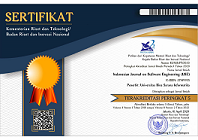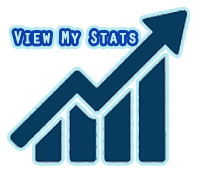Prediksi Klasifikasi Pembangunan Merek Kosmetik Dengan Metode Enbag K-Logres Berdasarkan Keterlibatan Pengguna Facebook
Abstract
Abstract: Building a brand new company that starts a business by conducting market research is intended to introduce new products and maintain existing businesses. But the market survey actually requires quite a lot of costs for transportation costs, brochure printing costs, more employee salaries and so forth. Surveys conducted offline also reach a less extensive market, less maximum results and less detail, and require more time. Based on the description above, the researchers conducted a study using Facebook performance metric data that assessed the construction of cosmetics brands using the K-Nearest Neighbor and Logistics Regression (SVM) algorithm by classifying which posts were the most desirable and less desirable by consumers, as well as measuring by the EnBag method K-LoGres of the two algorithms to improve the performance of the two proposed algorithms. Bagging technique was chosen because it has the advantage of being able to improve the measurement results and improve the accuracy of classification measurements by combining two or more algorithms. Based on the measurement results of Facebook metric data which assesses the development of cosmetic brands with the K-NN algorithm it gets an accuracy of 68.67% and a Logistic Regression (SVM) of 72.67% then the two algorithms are processed using the EnBag K-LoGres method getting an accuracy of 73.91%. Based on the results of measurements with the EnBag K-LoGres method the results increased by 1.24%.
Keywords: Brand Development, Cosmetics, K-Nearest-Neighbour, Logistic (SVM), EnBag K-Logres
Abstrak: Membangun merek perusahaan yang baru memulai usaha dengan melakukan riset pasar dimaksudkan untuk memperkenalkan produk baru serta mempertahankan usaha yang sudah ada. Namun survei pasar justru membutuhkan biaya yang cukup banyak untuk biaya transportasi, biaya cetak brosur, gaji karyawan lebih banyak dan lain sebagainya. Survei yang dilakukan secara offline juga menjangkau pasar kurang luas, hasil kurang maksimal dan kurang merinci, serta membutuhkan waktu yang lebih lama. Berdasarkan uraian diatas maka peneliti melakukan penelitian dengan memanfaatkan data metrik kinerja facebook yang menilai pembangunan merk kosmetik dengan menggunakan algoritma K-Nearest Neighbourdan Logistic Regreesion (SVM) dengan mengklasifikasikan postingan mana yang paling diminati dan kurang diminati oleh konsumen, serta melakukan pengukuran dengan metode EnBag K-LoGres dari kedua algoritma untuk meningkatkan kinerja kedua algoritma yang diusulkan. Teknik bagging dipilih karena memiliki kelebihan dapat memperbaiki hasil pengukuran serta meningkatkan akurasi dari pengukuran klasifikasi dengan menggabungkan dua atau lebih algoritma. Berdasarkan hasil pengukuran data metrik facebook yang menilai pembangunan merek kosmetik denganalgoritma K-NN memperoleh akurasi sebesar 68.67% dan Logistic Regression (SVM) sebesar 72.67% selanjutnya kedua algoritma diproses dengan metode EnBag K-LoGres mendapat akurasi sebesar 73.91%. Berdasarkan hasil pengukuran dengan metode EnBag K-LoGreshasilnya mengalami kenaikan sebesar 1.24 %.
Kata kunci: Pembangunan Merek, Kosmetik, K-Nearest Neighbour, Logistic Regression (SVM), EnBag K-LoGres
Full Text:
PDFReferences
Anbe, S., & Kobayashi, I. (2014). An approach to category classification of cosmetics reviews based on brand names. 2014 Joint 7th International Conference on Soft Computing and Intelligent Systems, SCIS 2014 and 15th International Symposium on Advanced Intelligent Systems, ISIS 2014, 971–975. https://doi.org/10.1109/SCIS-ISIS.2014.7044788
Arfi Joyendri. 2017. Strategi Customer Relationship Management Untuk Meningkatkan Loyalitas Pelanggan Dan Volume Penjualan Menggunakan Teknik Clustering K-Means. Telemat. - J. Inform. Telekomun. Komputasi Elektron. dan Ind. 14: 75–82.
BRILIANI, RIZKA ASRI et al. (2016). Analisis Kecenderungan Pemilihan Kosmetik Wanita Di Kalangan Mahasiswi Jurusan Statistika Universitas Diponegoro Menggunakan Biplot Komponen Utama. None, 5(3), 545–551.
Dewi S. 2016. Pada Prediksi Keberhasilan Pemasaran Produk Layanan Perbankan. Techno Nusa Mandiri XIII: 60–66.
Dosen Pendidikan 3.2020. Metode Data Mining. https://www.dosenpendidikan.co.id/metode-data-mining/ (Diakses pada 05 Mei 2020)
Hapsari, Y., Fikri Hidayattullah, M., Dairoh, D., & Khambali, M. (2018). Opinion Mining Terhadap Toko Online Di Media Sosial Menggunakan Algoritma Naïve Bayes (Studi Kasus: Akun Facebook Dugal Delivry). Jurnal Informatika: Jurnal Pengembangan IT, 3(2), 233–236. https://doi.org/10.30591/jpit.v3i2.919
Hermawanti, L., & Safriandono, A. (2016). Penggabungan Algoritma Forward Selection Dan K-Nearest Neighbor Untuk Mendiagnosis Penyakit Diabetes Di Kota Semarang. Jurnal Momentum UNWAHAS, 12(2), 138462. https://doi.org/10.36499/jim.v12i2.1631
Indonesia Internet Service Provider Association. 2016. Edisi 05 November 2016. Jakarta: APJII
Kristiyanti, D. A., & Wahyudi, M. (2017). Feature selection based on Genetic algorithm, particle swarm optimization and principal component analysis for opinion mining cosmetic product review. 2017 5th International Conference on Cyber and IT Service Management, CITSM 2017. https://doi.org/10.1109/CITSM.2017.8089278
Luqyana, W. A., Cholissodin, I., & Perdana, R. S. (2018). Analisis Sentimen Cyberbullying Pada Komentar Instagram dengan Metode Klasifikasi Support Vector Machine. Jurnal Pengembangan Teknologi Informasi Dan Ilmu Komputer (J-PTIIK) Universitas Brawijaya, 2(11), 4704–4713.
Maulida L. 2018. Kunjungan Wisatawan Ke Objek Wisata Unggulan Di Prov . Dki Jakarta Dengan K-Means. J. Inform. Sunan Kalijaga 2: 167–174.
Moro S, Rita P, Vala B. 2016. Predicting social media performance metrics and evaluation of the impact on brand building: A data mining approach. J. Bus. Res. 69: 3341–3351.
Muhammad Ardiansyah Sembiring. 2016. PENERAPAN METODE DECISSION TREE ALGORITMA C45 UNTUK MEMPREDIKSI HASIL BELAJAR MAHASISWA BERDASARKAN RIWAYAT AKADEMIK. JURTEKSI (JURNAL Teknol. DAN Sist. INFORMASI).
Oktanisa, I., & Supianto, A. A. (2018). Perbandingan Teknik Klasifikasi Dalam Data Mining Untuk Bank a Comparison of Classification Techniques in Data Mining for. Teknologi Informasi Dan Ilmu Komputer, 5(5), 567–576. https://doi.org/10.25126/jtiik20185958
Perbasnas Institut. 2016. Sarana Tukar Menukar Informasi dan Pemikiran Dosen. https://dosen.perbanas.id/apa-itu-data-mining/ (Diakses tanggal 03 Juni 2020).
Randi Rian Putra CW. 2018. IMPLEMENTASI DATA MINING PEMILIHAN PELANGGAN POTENSIAL MENGGUNAKAN ALGORITMA K-MEANS IMPLEMENTATION OF DATA MINING FOR POTENTIAL CUSTOMER SELECTION USING K-MEANS ALGORITHM. J. Inf. Technol. Comput. Sci. 1: 72–77.
Satvika, G. A. J., Nasution, S. M., & Nugrahaeni, R. A. (2018). Determination of the Best Vehicle Pathway with Classification of Data Mining Twitter using K-Nearest Neighbor. 2018 International Conference on Information Technology Systems and Innovation, ICITSI 2018 - Proceedings, 72–76. https://doi.org/10.1109/ICITSI.2018.8695947
Suyanto. (2017). Data Mining Untuk Klasifikasi dan Klasterisasi Data. Bandung: Informatika
UC Irvine Machine Learning Repository. 2016. Facebook Metrics, [online] Tersedia di: [Diakses 2 Oktober 2019]
DOI: https://doi.org/10.31294/ijse.v6i1.8107

This work is licensed under a Creative Commons Attribution-NonCommercial-ShareAlike 4.0 International License.
ISSN : 2714-9935


Published by LPPM Universitas Bina Sarana Informatika
Jl. Kramat Raya No.98, Kwitang, Kec. Senen, Kota Jakarta Pusat, DKI Jakarta 10450
This work is licensed under a Creative Commons Attribution-ShareAlike 4.0 International License









